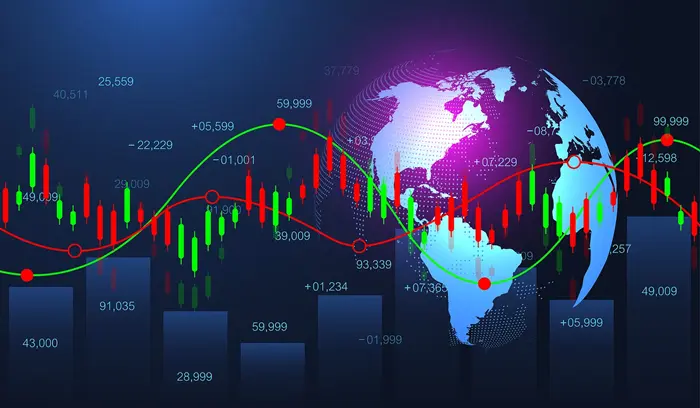Stocks are a crucial part of the financial markets, offering investment opportunities for individuals and institutions alike. Investors actively trade stocks on exchanges, looking to profit from price movements. However, there are instances where stocks experience price movements that are halted, even when the price is moving upward. This can seem counterintuitive because investors often associate upward price movements with positive market sentiment. Understanding why stocks get halted during periods of upward movement is essential for investors, traders, and market participants. This article will explore the reasons behind stock halts, the mechanisms that trigger them, and their implications for the financial markets.
What is a Stock Halt?
A stock halt is a temporary suspension of trading in a particular security. During a halt, market participants are not able to buy or sell the stock. This pause in trading can occur for a variety of reasons and may last anywhere from a few minutes to several hours, or in rare cases, even days. Stock halts are implemented by exchanges, such as the New York Stock Exchange (NYSE) or NASDAQ, to maintain an orderly market, protect investors, and ensure that all relevant information is available to all participants before trading resumes.
When a stock experiences a halt during a period of upward movement, it can be confusing for investors who may have been expecting the stock to continue rising. A halt in trading is often seen as a mechanism designed to ensure that the market remains fair, transparent, and efficient.
Reasons Why Stocks Get Halted Going Up
There are several reasons why stocks might be halted while experiencing upward movement. These reasons are designed to address market concerns and ensure that trading remains orderly. Let’s examine the key factors behind these halts.
1. Extraordinary Price Movements
One of the most common reasons for a stock to be halted during upward movement is extraordinary price volatility. Stock exchanges have systems in place to monitor the price movements of securities, and if a stock experiences an unusually large price jump within a short period of time, trading may be temporarily halted.
For instance, if a stock’s price rises by more than a certain percentage in a short time (e.g., 10% or more), the exchange may implement a trading halt to allow time for the market to assess the situation. This halt gives investors a chance to digest any new information that may have caused the price spike, such as news or announcements related to the company, before continuing to trade.
The goal of halting trading during extreme price movements is to prevent excessive speculation and protect investors from the risks associated with sudden, sharp price swings. A halt ensures that traders and investors can make informed decisions once trading resumes.
2. Unusual Market Activity or Rumors
Sometimes, stock prices can rise rapidly due to rumors or speculative trading rather than any substantial news. In such cases, exchanges may decide to halt trading to investigate whether the price movement is based on accurate information. A halt allows the exchange to prevent the price from becoming distorted by market manipulation or rumors that could lead to unjust price fluctuations.
For example, if a company’s stock begins to rise sharply due to an unverified rumor about a potential acquisition or product launch, the exchange may suspend trading to allow time for the company to confirm or deny the information. A halt provides a cooling-off period for the market and helps ensure that prices are not artificially inflated by unverified news.
3. Announcement of Material Information
A stock’s upward movement could also be triggered by an announcement of material information, such as earnings reports, mergers, acquisitions, or other significant corporate events. When a company makes a major announcement that could significantly affect its stock price, the exchange may halt trading to allow all investors to have equal access to the information.
For example, if a company announces a breakthrough product, an acquisition deal, or a change in management that leads to an upward movement in its stock price, the exchange may halt trading temporarily. This ensures that investors have enough time to assess the news and decide whether they want to buy or sell the stock based on the new information.
A halt may also be imposed if there is a concern about the accuracy of the information or if the company needs time to clarify or correct any errors in the announcement. This process helps prevent insider trading and ensures that all participants in the market are operating on the same information.
4. Circuit Breakers
Circuit breakers are mechanisms designed to prevent a stock from experiencing extreme volatility in a short period of time. While circuit breakers are often associated with large declines in stock prices, they can also be triggered by significant upward movements. These rules are implemented to maintain stability and fairness in the market.
Circuit breakers are typically triggered when a stock’s price rises by a certain percentage within a short period, such as 5% or 10%. Once the circuit breaker is triggered, the stock’s trading may be halted temporarily to allow investors to reassess the situation. The objective is to prevent a rapid price increase that could be driven by speculation or market manipulation.
Circuit breakers are set to activate when trading conditions become extreme, ensuring that the market can stabilize before continuing. These mechanisms play an essential role in maintaining orderly and fair trading during periods of heightened volatility, whether in an upward or downward direction.
5. Regulatory and Compliance Concerns
Stocks can also be halted due to concerns about regulatory compliance. Exchanges and regulatory bodies, such as the U.S. Securities and Exchange Commission (SEC), monitor trading activity to ensure that companies comply with disclosure requirements and other regulations.
If there is a concern that a company may not be in compliance with these regulations or if the stock price is moving rapidly due to potentially misleading or incomplete information, a trading halt may be imposed. For example, if a company fails to file required financial statements or if there are concerns about accounting irregularities, the exchange may halt trading while the matter is investigated.
These halts are implemented to protect investors and maintain trust in the market. Ensuring that companies comply with regulations helps prevent the market from being influenced by misleading or fraudulent activities.
6. Arbitrage Opportunities
Arbitrage refers to the practice of exploiting price differences for the same asset in different markets. If a stock is listed on multiple exchanges and its price begins to rise rapidly on one exchange, there may be an arbitrage opportunity for traders to buy the stock on one exchange and sell it on another at a higher price. This can create an imbalance in the market, as traders rush to take advantage of the price difference.
In response, exchanges may halt trading temporarily to allow time for the arbitrage situation to stabilize. By halting trading, the exchange can prevent market manipulation and ensure that prices reflect true supply and demand rather than temporary price inefficiencies.
Arbitrage opportunities may not always cause significant price movements, but in cases where they do, halting trading can help to maintain market integrity and avoid any unfair advantage for certain traders.
7. Technology Failures or Errors
In some cases, upward price movements may be the result of a technology error or malfunction. Stock exchanges rely on sophisticated systems to execute trades, process orders, and update prices. If there is a glitch in the system or if an algorithm malfunction leads to an unintended price spike, trading may be halted to correct the error.
For example, a malfunction in a stock’s automated trading system may cause its price to rise sharply in a short period of time. If the exchange identifies the issue, a trading halt will be implemented to correct the malfunction and ensure that the price movement is not driven by faulty technology.
8. Market Sentiment and Speculation
Market sentiment plays a significant role in driving stock prices, particularly during periods of speculation. If traders and investors believe that a stock is undervalued or that a particular event will drive its price higher, they may engage in speculative buying, leading to an upward price movement.
In such cases, a stock halt may occur to ensure that the price increase is supported by fundamental news or information. Speculative price movements can sometimes create bubbles or distort the true value of a company, leading exchanges to impose halts as a way to maintain stability.
Conclusion
Stock halts during upward movements are designed to ensure that the market operates in a fair, transparent, and orderly manner. Whether due to extraordinary price movements, rumors, material information announcements, circuit breakers, regulatory concerns, arbitrage opportunities, or technology failures, trading halts serve as a mechanism to protect investors and maintain trust in the financial markets.
For investors, understanding the reasons behind stock halts is crucial for navigating the complexities of the market. While stock halts may be frustrating in the short term, they are ultimately in place to maintain fairness and ensure that all participants have access to the same information when making investment decisions. By remaining informed and patient during these pauses, investors can better manage their expectations and make more thoughtful decisions when trading stocks.




























